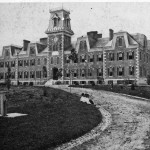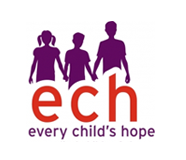History of Every Child’s Hope

In 1858, Reverend Louis Nollau began what was to become an enduring mission. He opened the basement of St. Peter’s Evangelical Church to shelter a young boy named Henry Sam, and so the German Protestant Orphans Home began. Many other children followed due to the recurrent outbreaks of cholera, a fatal disease at the time.
Incorporated in 1861, the then-named German Protestant Orphan’s Home operated in the parsonage of the church for the next two years. These quarters became too small as more children arrived, prompting the orphanage to move to a larger home on Carr Street in downtown St. Louis.
Following a fire in 1863, Rev. Nollau and the Board of Directors felt that the children needed a place in the country where they could breathe clean air and learn a trade. They purchased a 65-acre farm on St. Charles Rock Road for $23,500. The farm was on one of the highest points in St. Louis County and included a substantial mansion, outbuildings, faming fields, and over 1,000 fruit bearing trees.
In the fall of 1866, 60 boys and girls moved to the “country.” It was a half-day’s ride from the city by farm wagon.
By 1874, the number of children reached 250 and the Board of Directors had to make the decision to turn some children away. The “family” had outgrown its current home. That fall, construction began on a building that would house the children and staff along with a school.
This newly-remodeled building caught fire during a blizzard and the children were temporarily moved to other orphanages in the area. Just eleven months after the blaze, a new home was built on the existing foundation and was dedicated in November 1877.
The organization continued to thrive as the German Protestant Orphan’s Home, with every transaction and communication done in German. This all changed in 1917 following World War I, when the Board decided that all religious instruction, education, communication and all publications should be done in English. All other transactions were changed to English by September 1918.
During the Depression, the Home managed to keep its doors open by selling much of the property. This is when the organization took shape within our existing 34 acres.
On September 18, 1945, the Board voted to rename the German Protestant Orphan’s Home to Evangelical Children’s Home. 1946 saw the orphanage become a residential treatment facility for children from “broken homes.” Following World War II, more and more children were being placed in foster care. The Home was evolving to become a recognized center for children living with emotional challenges.
As the times changed, Evangelical Children’s Home managed to stay a leader in the field by continuing to be innovative in the care of the children it served. During the mid-1950s, six traditional ranch houses were built to replace dormitory-style living quarters, a revolutionary decision at the time. These houses continue to be home today to 56 children in our care.
Our first group home was opened in the 1960s and in 1965 the Day Care Center began to help mothers who might otherwise be unable to care for their child.
A 1978 study in the Kansas City area prompted the organization to open a girls’ residential treatment unit as a branch of Evangelical Children’s Home on the west side of the state.
During the 1980s, our programs continued to be innovative and evolve to meet the needs of our changing society. The on-property school was reinstated for youth who were having difficulties in traditional educational settings and a program called Steppingstone was created for older teens. The Family and Personal Counseling Center began operations and we welcomed the first children in our day treatment program.
Our Kansas City campus eventually began accepting young men as well as women and, in 1997, changed its name to Steppingstone and its program to transitional living. This change was made after seeing that older teens were an extremely underserved population, many who would find themselves homeless after aging out of the foster care system. The goal was to teach these young men and women to be independent and successful.
In 1982, a new on-property school was started to help children living on the St. Louis Campus as well as in the community. This new K-12 school was designed to provide special assistance to young people with severe educational and behavioral challenges. Children work on credit recovery, learn coping strategies, and strive to reintegrate into a community school.
In 2009, Evangelical Children’s Home found it necessary to once again change their name, becoming ECH: Every Child’s Hope. This change reflected the needs of our current young people and showed that ECH had become more than just a home. ECH has also become a resource for families in crisis, at-risk teens, students needing individualized attention, and young children in need of Head Start programs.
ECH began working with families in the community through Foster Care Case Management, Family Solutions for Kids (a program designed to work with the whole family in their home), and Outpatient Psychiatric Care. ECH focuses on the whole child, the whole family, and works to help children and families navigate through today’s challenges.
For the past 160 years, Evangelical Children’s Home has remained true to the mission set forth by Rev. Nollau. We have continued to look after the welfare of the children and families who need it the most. Our rich and colorful history has built the foundation we will use to be successful for the next 160 years.
